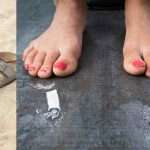Wearing the right pair of shoes isn’t just about style, it’s a decision that can impact your comfort, posture, and long-term health. Most people focus on how shoes look without realizing that fit and function are far more important. Choosing the wrong footwear can lead to foot pain, knee issues, and even back problems over time.
If you’ve ever ended a day with aching feet or developed blisters after a short walk, chances are your shoes weren’t a good match for your needs. Fortunately, understanding your feet and knowing what to look for in a shoe can make a big difference. This guide will help you choose footwear that supports your feet and your lifestyle.
Know Your Foot Type
The shape and structure of your feet play a big role in what kind of shoes will be comfortable. Some people have flat feet, where the arch is very low or almost nonexistent. Others have high arches that don’t absorb shock very well. And many fall somewhere in between, with a neutral arch that allows for more flexibility in shoe choice.
You can do a simple test at home by wetting your feet and stepping on a piece of paper. A full footprint usually means flat feet, while a very narrow connection between heel and toe suggests a high arch. Knowing this can help you narrow down what type of arch support or cushioning you need in a shoe.
Measure Properly for Fit
Many adults wear shoes that don’t fit them correctly, often because they haven’t measured their feet in years. Shoe size can change due to age, weight gain, or pregnancy. Always measure both feet at the end of the day, when your feet are at their largest. This gives you a more accurate idea of your true size.
It’s also important to account for width, not just length. If your shoes feel tight on the sides, you may need a wider fit. Shoes should never squeeze your toes or rub your heels. A properly fitting shoe will feel secure but not tight, and there should be about a thumb’s width of space in front of your longest toe.
Match Shoes to Activity
Matching your footwear to the activity you’re doing is one of the most overlooked steps in shoe shopping. Different activities require different features in a shoe. Here’s a quick breakdown:
- Running: Requires cushioning, lightweight material, and heel support
- Walking: Needs flexible soles and mild arch support
- Hiking: Durable soles, ankle support, and weather resistance are key
- Office or dress wear: Should offer comfort and style without sacrificing foot health
- All-day standing or retail work: Needs serious cushioning and support to prevent fatigue
Choosing a shoe based on your daily routine helps prevent foot strain and keeps you comfortable throughout the day.
Focus on Materials and Construction
The material of your shoes affects not just their appearance, but their breathability, durability, and comfort. Leather is often preferred for dress shoes because it molds to your feet over time and lasts long. For athletic shoes, synthetic mesh or knit materials offer lightweight performance and better airflow.
Aside from the outer material, the insole and midsole construction also matters. Memory foam, EVA foam, and gel-based soles can significantly enhance cushioning and reduce impact on your joints. Pay attention to how the shoe is constructed , double stitching, reinforced soles, and firm heel counters usually indicate a longer-lasting, more supportive shoe.
Avoid Common Mistakes
One of the biggest mistakes people make is prioritizing fashion over fit. Just because a shoe looks good doesn’t mean it’s good for your feet. Styles that pinch your toes or lack support might be trendy, but they can cause serious problems over time. Another common error is assuming all shoes will “break in.” A well-fitting shoe should feel comfortable right from the start.
Don’t forget to replace shoes when they wear out. Even high-quality shoes lose support over time. Worn-out soles, compressed cushioning, or stretched uppers are signs it’s time for a new pair. Listening to your body. Especially your fee can help you catch these issues early and avoid unnecessary pain.
Conclusion
Choosing the right shoes is a small step that makes a big difference. By understanding your foot shape, getting the correct size, choosing shoes based on activity, and paying attention to materials, you’ll ensure comfort and prevent problems down the road. A thoughtful approach to shoe shopping can lead to better posture, less fatigue, and happier feet every day.
